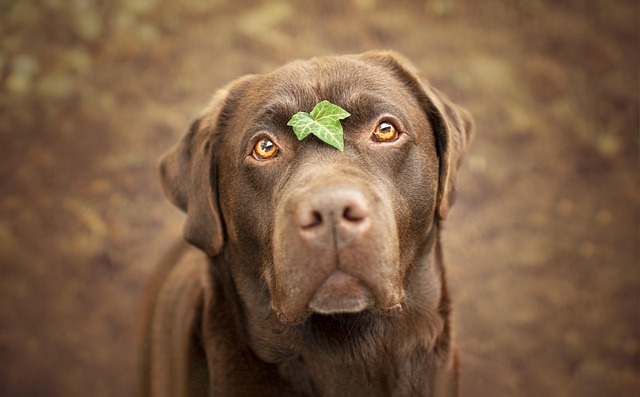
What is glaucoma in a dog?
You might notice your dog squinting more at mealtime or avoiding bright sunlight—these small changes could be early signs of a serious eye condition.
You’re bundled up for a winter walk in Chicago with your 8-month-old Lab mix, when he suddenly stops—lifting one paw, then another, like he’s stepping on crushed ice. You kneel to check, and your heart drops: His paw pads are dry, cracked, and flaky, with tiny red spots where they’ve started to split. Rummaging through your pantry and pet bag, you see options—coconut oil, paw balm, even olive oil—and wonder: What is the best thing to moisturize dog paws with, so I don’t hurt him or waste money? This panic is exactly what new U.S. dog parents face, but the answer boils down to three key things: safety (non-toxic if licked), nourishment (fixes dryness, not just covers it), and protection (shields from harsh elements).
The reason your dog’s paws need moisturizer is simple: Unlike human skin, their paw pads produce very little natural oil. That tough outer layer (called keratin) protects sensitive inner tissue, but it dries out fast when exposed to winter salt, summer pavement, or even dry apartment heat. My Austin vet, who helps first-time owners with paw care year-round, explains: “The best moisturizers sink into the keratin layer to repair dryness, not just sit on top. And since dogs always lick their paws, it has to be 100% non-toxic—no fragrances, chemicals, or weird additives.” This isn’t about “spoiling” your pup; it’s about preventing pain and infections that come with cracked paws.

Let’s break down the best options, with real stories from other owners to guide you. First, unrefined coconut oil: It’s cheap, easy to find at grocery stores, and packed with medium-chain fatty acids that heal cracks from the inside out. Warm a tablespoon between your palms (cold oil shocks sensitive paws!) and massage gently into clean pads—focus on the cracked edges. My Denver neighbor used this on her Husky’s winter paws; after 3 nights of nightly massages, his cracks were smooth, and he stopped limping. Second, pet-specific paw balm (with beeswax or shea butter): It adds a thin, protective barrier, perfect for summer when pavement hits 120°F. My LA friend swears by a beeswax-based balm for her Chihuahua—she applies it 15 minutes before walks, and his paws stay soft even in extreme heat. Third, unrefined olive oil: Great if you don’t have coconut oil handy—just skip refined versions (they lose nutrients during processing). I used this on my Lab mix when we ran out of balm; it worked just as well, and he loved the mild taste (no more frantic licking!). Pro tip: Always clean paws with a warm, damp cloth first—dirt trapped under moisturizer will make cracks worse. If your pup can’t stop licking, slip on soft, breathable paw socks (use positive reinforcement: give a freeze-dried treat when he lets you put them on!)—my Chicago roommate’s Pit Bull now sits patiently for his “paw spa” routine.
This paw care ties directly to U.S. pet rules, culture, and daily life. First, responsible moisturizing aligns with compliance: Keep your dog’s rabies vaccine records handy (every state requires this, and apartments will ask to see it) and always carry poop bags—cities like NYC fine up to $300 for skipping this, and a dog with healthy paws is easier to walk (and clean up after!). For apartments, set up a “paw station” by the door: a towel, your chosen moisturizer, and treats—this turns post-walk care into a quick, consistent habit (no more chasing your pup around the couch). Community etiquette matters too: Avoid walking on hot pavement during midday (test it with your hand—if it’s too hot for you, it’s too hot for them!) and stick to shaded paths. Never punish your dog if he resists paw care—if he pulls his paw away, take a break, offer a treat, and try again. Punishment breaks trust; patience builds it.
Watch for small wins: Your dog stops limping, lets you touch his paws without flinching, or trots happily on walks. The best thing to moisturize dog paws with isn’t fancy—it’s something safe, nourishing, and easy to use. Whether it’s coconut oil from your pantry or a simple paw balm, you’re not just fixing his paws—you’re making every walk a happier, pain-free moment. That’s the comfort every new dog parent needs.

You might notice your dog squinting more at mealtime or avoiding bright sunlight—these small changes could be early signs of a serious eye condition.

Let’s set the scene: It’s a sweltering Phoenix afternoon—105°F outside—and you rushed your 2-year-old Lab mix, Cooper, on a quick walk to “get it over with.”

Let’s get real: You’re in your Miami apartment, watching your 3-year-old Corgi, Loki, struggle to climb the stairs to your second-floor unit.

Many dog owners brush off occasional scratching as just “dog behavior,” but persistent itching often signals something more—like a food allergy.

You might first notice your dog scratching more than usual—chewing at their paws until the fur looks thin, or rubbing their face against the couch nonstop.

Let’s be real: You’re standing in your Chicago apartment, watching your 3-year-old Beagle, Max, huff and puff just to climb onto the couch.